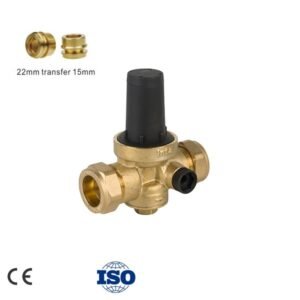Introduction:
Pressure reducing valves (PRVs) are indispensable components in fluid systems, ensuring that downstream equipment receives a controlled and safe pressure regardless of upstream variations. Central to their functionality is the maximum pressure they can handle. This article aims to provide an in-depth exploration of the maximum pressure capacity of PRVs, elucidating its importance, influencing factors, and practical implications for system operation and maintenance.
Understanding Maximum Pressure Capacity:
The maximum pressure capacity of a PRV denotes the upper limit of pressure that the valve can effectively regulate while maintaining its structural integrity and performance. Exceeding this limit poses risks such as valve failure, system damage, and compromised safety. Therefore, a comprehensive understanding of maximum pressure capacity is crucial for the proper selection, installation, and operation of PRVs.
Factors Influencing Maximum Pressure Capacity:
Several factors influence the maximum pressure capacity of PRVs:
- Material Strength and Construction: The choice of materials and the design of PRVs significantly impact their maximum pressure capacity. High-strength materials and robust construction techniques are imperative for withstanding high-pressure environments.
- Operating Conditions: Fluid type, temperature, flow rate, and system pressure dynamics directly affect the stress exerted on PRVs. Operating within specified pressure limits ensures optimal performance and longevity.
- Compliance Standards: PRVs are subject to industry standards and regulations governing maximum pressure ratings. Compliance with these standards ensures safety and reliability in diverse applications.
- Design Features: The configuration and internal mechanisms of PRVs, such as piston, diaphragm, or pilot-operated designs, influence their maximum pressure capacity. Understanding these design features aids in selecting the most suitable PRV for specific applications.
Selecting PRVs with Appropriate Maximum Pressure Ratings:
Selecting PRVs with suitable maximum pressure ratings involves a systematic approach:
- Assess System Requirements: Understand the maximum pressure demands of the downstream system under various operating conditions, including peak loads and pressure fluctuations.
- Consult Manufacturer Documentation: Review manufacturer specifications to identify PRVs with maximum pressure ratings compatible with system requirements and environmental conditions.
- Consider Safety Margins: Incorporate safety margins when selecting PRVs to account for unforeseen pressure spikes, system anomalies, and future operational changes.
- Verify Compliance: Ensure that selected PRVs comply with relevant industry standards and regulations governing maximum pressure ratings to mitigate risks and ensure system safety.
Maintaining and Monitoring PRVs:
Proactive maintenance and monitoring are essential for preserving PRV integrity and performance:
- Regular Inspections: Conduct routine inspections to identify signs of wear, corrosion, or damage that may compromise maximum pressure capacity.
- Calibration and Testing: Periodically calibrate and test PRVs to verify pressure-reducing accuracy and confirm compliance with maximum pressure ratings.
- Record-Keeping: Maintain comprehensive records of PRV installation, maintenance, and performance assessments to track their operational history and facilitate informed decision-making.
Conclusion:
In conclusion, the maximum pressure capacity of PRVs is a critical parameter that demands careful consideration in fluid system design, operation, and maintenance. By understanding the factors influencing maximum pressure capacity and adopting best practices for selecting, installing, and maintaining PRVs, stakeholders can ensure system integrity, reliability, and safety. Ultimately, prioritizing adherence to maximum pressure ratings safeguards assets, personnel, and the environment from potential hazards associated with excessive pressure in fluid systems.






